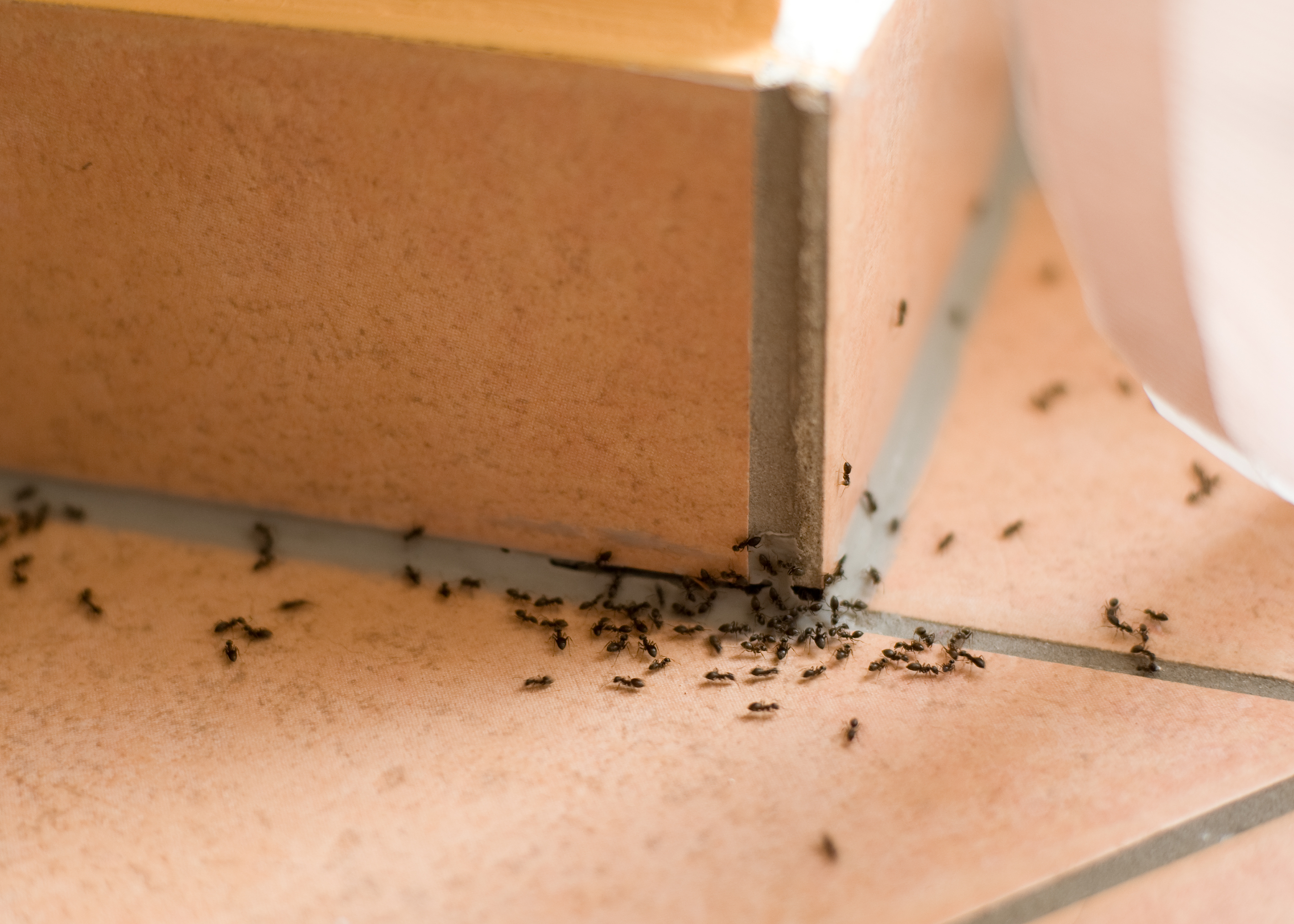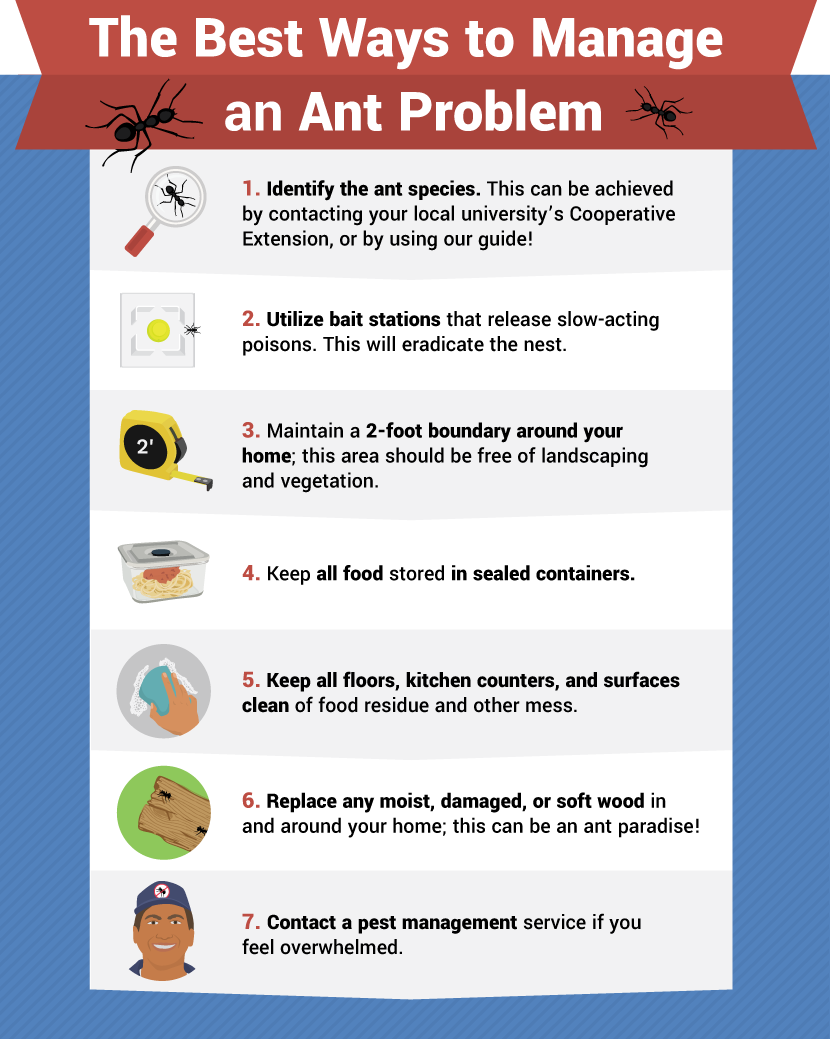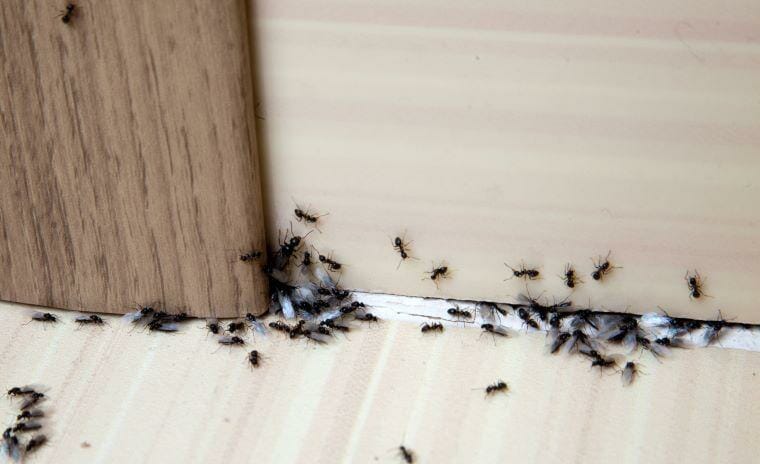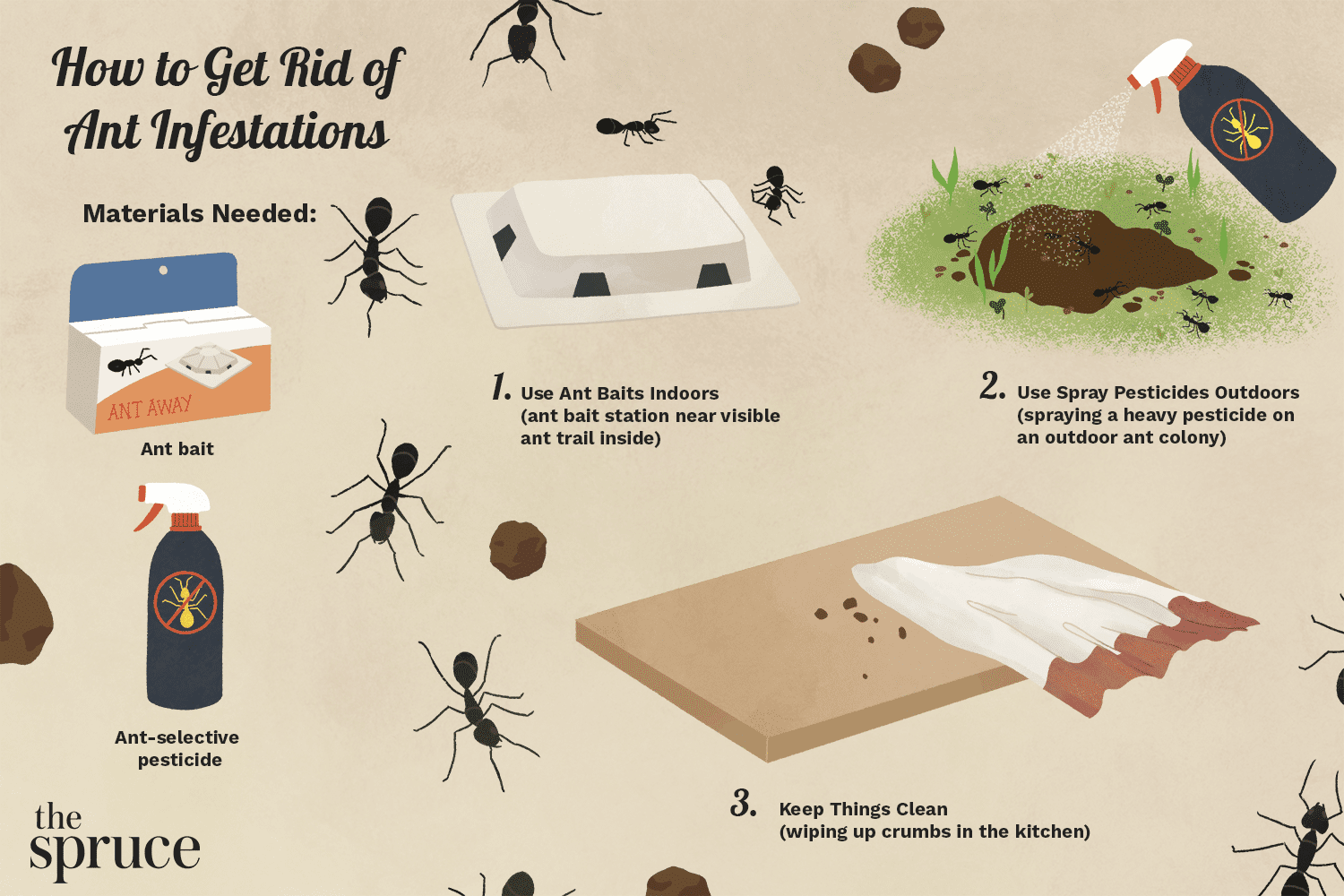To fix an ant problem, first identify and seal entry points then use baits or non-toxic remedies. Regular cleaning reduces attractants like crumbs and spills.
Ant infestations can turn from a minor annoyance to a persistent issue if not tackled promptly. Eradicating ants begins with prevention; maintaining cleanliness is crucial. By sealing cracks and eliminating food sources, you deter ants from entering your home. Effective solutions range from natural deterrents, such as vinegar or peppermint oil, to commercial ant baits that target the colony.
It’s essential to act swiftly once you spot these unwelcome guests. By doing so, you can maintain a peaceful, ant-free environment. Engaging professionals may become necessary for severe infestations, ensuring the complete removal of the ant population and safeguarding your space from future invasions. Remember, a clean and well-maintained home is your best defense against ant problems.

Credit: www.washingtonpost.com
Ant Infestation: Recognizing The Signs
An ant infestation may start small but can quickly escalate into a major nuisance. Knowing the signs is key to tackle the problem early. Keep an eye out for these common indicators that suggest an army of ants may have fortified in your home.
Identifying Ant Trails
One definitive sign of an ant infestation is the presence of ant trails. These are paths that ants follow to and from their food source. Check these areas:
- Kitchen counters
- Food storage areas
- Along baseboards
- Window sills
Use a flashlight to help spot the subtle lines that these tiny invaders create.
Common Ant Nest Locations
Ants may set up their homes both inside and outside. Common indoor nesting spots include:
- Moist areas like bathrooms and kitchens
- Inside walls or insulation
- Under floors or carpet edges
Outdoor nests are often found:
- In soil, especially under plants or foundations
- Under rocks or woodpiles
- Near other structural voids
Look for small dirt mounds or displaced soil which can indicate nest entrances.
The Types Of Ants Invading Homes
Several ant species enter homes seeking shelter and food. Recognizing the types is the first step in tackling an infestation. Here, we explore two common culprits: carpenter ants and sugar ants.
Carpenter Ants And Their Habits
Carpenter ants are large and primarily black. Unlike termites, they do not eat wood but excavate it to build their nests. Look for these signs of carpenter ants:
- Wood shavings beneath wooden items
- Sounds of faint rustling within walls
- Large, winged ants emerging from crevices
Control these pests by:
- Tracking down the nests and moisture sources
- Sealing entry points with caulk
- Using baits and insecticides if necessary
Sugar Ants: Attracted To Sweets
Sugar ants love sweet foods and are smaller in size. They are drawn to spills, sticky residues, and sugary treats. To minimize their presence:
- Clean up spills and food crumbs promptly
- Store sugar, syrup, honey, and other sweets in airtight containers
- Use ant baits that contain sweet substances as lures
Natural Ant Repellents And Deterrents
Ant invasions can be frustrating, but don’t worry! Using natural ant repellents and deterrents can help kick them out without harsh chemicals. Simple household items like vinegar and essential oils are powerful tools in the battle against these tiny invaders. Let’s explore safe, natural methods to protect your home.
Using Vinegar As A Repellent
Vinegar is not just for salads anymore. Ants hate its strong smell. This makes vinegar an excellent ant repellent.
- Mix equal parts of water and vinegar.
- Fill a spray bottle with the mixture.
- Spray around baseboards, windowsills, and entry points.
- Repeat this process regularly for best results.
For a stronger solution, increase the vinegar ratio. Wiping down surfaces also erases the trails that ants follow, deterring them from coming back.
Essential Oils That Ants Dislike
Essential oils are not just for relaxing baths. Some of them send ants running.
| Oil Type | Usage Tips |
|---|---|
| Peppermint | Add a few drops to cotton balls and place them where ants enter. |
| Tea Tree | Mix with water and spray on ant paths. |
| Lemon Eucalyptus | Apply oil directly or in a water solution around doors and windows. |
| Clove | Use in diffusers to spread the scent that ants detest. |
Create a barrier with these oils by tracing the ants’ entry points. Refresh every few days to maintain a no-ant zone. They provide a pleasant aroma for you but a no-go signal for ants.
Kitchen Remedies To Combat Ants
Kitchen remedies often hold the key to effective ant control. With readily available ingredients, these solutions are not only eco-friendly but also safe for use around food areas. Let’s explore some proven home strategies to keep those pesky invaders at bay!
Baking Soda And Sugar Mixture
Baking soda is a versatile cleaner, but also a potent ant deterrent. Combine it with sugar, and you’ve got a powerful solution. Here’s how to use it:
- Mix equal parts of baking soda and sugar.
- Sprinkle the blend around entry points where ants sneak in.
- Ants carry the mixture back to the colony, where it works its magic.
The Power Of Lemon Juice
Lemon juice brings more than zest to your water. Its acidic nature disrupts ant scent trails. Follow these steps:
- Squeeze fresh lemon juice or use bottled lemon concentrate.
- Swab juice directly onto ant paths or dilute it for a spray.
- Wipe counters with a lemon-water solution to keep ants away.
Armed with these kitchen remedies, your ant woes will be nothing more than a memory.
Chemical Ant Baits And Their Use
Chemical ant baits offer an effective solution for combating ant invasions. They use a mixture of attractants and slow-acting insecticides to target the whole colony. Understanding how to select and place these baits is crucial for successful ant control.
Selecting The Right Ant Bait
Different ant species crave different food sources. Identify the type of ant to choose the most appealing bait. Here’s a quick guide:
- Sweet-eating ants: Go for sugar-based gels or liquids.
- Protein-feeders: Opt for baits with a granular texture.
- General feeders: Select baits offering a combo of ingredients.
Always read the product label for specifics on ant species effectiveness.
Proper Placement Of Ant Baits
Placing ant baits correctly ensures they work their magic. Follow these tips:
- Identify ant trails or areas of activity.
- Place baits along these paths, but not directly on top of the trails to avoid deterring ants.
- Use multiple baits to provide ample opportunities for ants to find the poison.
- Replace baits regularly, as fresh bait is more enticing.
For larger infestations, combine baits with non-repellent insecticide sprays for a more aggressive approach.

Credit: www.fix.com
Preventative Measures To Keep Ants Away
Imagine a home without the nuisance of ants. It’s possible with the right preventative steps. Keeping ants out ensures a cleaner, more comfortable living space. Getting ahead of the problem is key. Simple measures can make a huge difference in preventing an ant infestation.
Sealing Entry Points
Blocking access is a top priority. Ants are tiny and can sneak through small cracks. Look around for potential entry points. Check the foundation, walls, and windows of the home.
- Inspect for holes or gaps in exterior walls.
- Use caulk to seal any openings around windows and doors.
- Repair screens that might have tears or holes.
Regular Cleaning Routines
Consistency is key in keeping ants at bay. Ants scout for food and trails left behind. Maintaining a clean environment reduces their attraction.
| Area | Action |
|---|---|
| Kitchen Surfaces | Wipe daily with a vinegar-based solution. |
| Floors | Sweep and mop to remove crumbs and spills. |
| Garbage Bins | Dispose of trash regularly and wash bins weekly. |
Remember to store food properly. Use airtight containers for cereals, snacks, and baking ingredients. Seal pet food and store it out of reach.
Professional Pest Control Solutions
Ant infestations can turn your home into an unwelcome environment. Efficient and effective eradication often requires professional pest control solutions. They assess the situation, identify the ant species, and employ strategies to not just eliminate current pests but also to prevent future invasions. Knowing when to seek help and understanding the available treatments can ensure your ant problem is handled professionally.
When to Call in the ExpertsWhen To Call In The Experts
Calling in experts is vital in severe infestations, when home remedies fail, or when you can’t find the source. Professionals possess the necessary experience, tools, and knowledge to tackle the root of the problem. Here are signs it’s time to contact them:
- Large colonies: Spotting large numbers of ants or their nests inside.
- Recurring sightings: Ants return even after treatment.
- Property damage: Signs of structural damage from carpenter ants.
- Health concerns: Presence of species that might pose health risks.
Understanding Pest Control Treatments
Professional treatments vary based on the infestation’s severity and the ant species in question. Here’s what you can expect:
| Step | What Happens |
|---|---|
| Inspection | Experts determine the infestation’s scope and ant species. |
| Plan | A tailored approach for eradication and prevention is crafted. |
| Treatment | Applying baits, insecticides, and barriers to eliminate ants. |
| Follow-up | Ensuring success and offering advice for ongoing prevention. |
Understanding these treatments enables you to make informed decisions about professional ant control. Trust your pest problem to the experts and restore peace to your home.
Long-term Strategies For Ant-free Living
Battling with ants in your home can often feel like an endless war. Yet, the key to victory lies in the long-term strategies that focus on prevention. It’s not just about winning battles; it’s about ending the war. Implementing consistent changes in and around your home can ensure that your living spaces remain ant-free for good. Let’s explore some effective tactics under two crucial categories: landscaping and storage.
Landscaping Tips To Deter Ants
Making smart choices in your garden’s layout and upkeep can make all the difference:
- Trim trees and bushes regularly to prevent ants from using them as bridges to your home.
- Maintain a dry environment; ants are attracted to moisture, so fix any leaks or drainage issues.
- Plant ant-repellent flora such as peppermint, garlic, or chrysanthemums around your home’s foundation.
- Spread diatomaceous earth around your home’s perimeter as a natural ant deterrent.
Investment In Ant-proof Containers
To keep ants away from your food, consider these storage solutions:
- Opt for airtight containers to store pantry items.
- Choose heavy-duty plastic or glass that ants can’t penetrate.
- Clean containers regularly to avoid attracting ants with residue or spills.
Common Mistakes To Avoid In Ant Elimination
Dealing with ants can be frustrating without the right approach. Important details are often missed. This can make the problem worse. Learn from common mistakes and get rid of ants effectively.
Ignoring The Colony Source
Tracking down the colony is vital. Finding the queen and her nest ends the infestation. Without this step, ants keep coming back. Use baits to trace the ants to their source. Always tackle the colony to ensure success in ant elimination.
Inconsistent Treatment Applications
Ant control needs regular effort. Missed treatments allow ants to rebound. Ensure you apply baits and repellents as directed. Stick to a schedule. Ant populations reduce with consistent treatment.
- Identify entry points – Seal cracks and crevices.
- Remove attractants – Keep areas clean and food sealed.
- Choose the right bait – Some baits work better for certain ants.
Monitoring And Maintaining An Ant-free Home
Keeping ants out requires vigilance and a solid plan. An ant-free home is a happy home. Learn effective ways to inspect and repel these tiny invaders.
Regular Inspections
Regular checks are key to an ant-free home. Look for ants in the kitchen, bathrooms, and outside walls. Use a flashlight to check dark, hidden spaces.
- Food sources: Clean any spills immediately.
- Entry points: Seal cracks and openings around doors and windows.
- Moist areas: Fix leaks to prevent ant attraction.
Continued Use Of Repellents
Keep ants at bay with repellents. Use natural or chemical options. Be consistent with application.
| Type of Repellent | Frequency of Use |
|---|---|
| Natural (Vinegar, Citrus) | Once a week |
| Chemical (Ant Baits, Sprays) | As directed on product |
Remember: Consistency is crucial. Keep using repellents throughout the year. Monitor results and adjust as needed.

Credit: smithspestmanagement.com
Frequently Asked Questions For How To Fix Ant Problem
What Are Common Causes Of Ant Infestations?
Ant infestations are often caused by easy access to food and water. Crumbs, spills, and pet food left out can attract ants. Moist areas, such as leaky pipes, also harbor ant colonies.
How Do I Identify The Type Of Ant In My Home?
Identifying ants involves observing their size, color, and behavior. Carpenter ants are large and damage wood, while sugar ants are smaller and attracted to sweets. Take a close-up photo for precise identification.
What Are Natural Remedies For Ant Problems?
Natural remedies include using vinegar, lemon juice, or cinnamon, which disrupt ant trails. Ants avoid peppermint oil and coffee grounds. Place these near entry points to deter ants effectively.
Is It Necessary To Hire A Pest Control Service For Ants?
Hiring a pest control service is beneficial for major infestations. Professionals use targeted treatments and have knowledge on eliminating ant colonies. For minor problems, DIY methods may be sufficient.
Conclusion
Battling an ant infestation can be a hassle, but with the right approach, it’s manageable. Implement the strategies outlined earlier, consistently applying preventative measures. Remember, patience and persistence are your best tools. For stubborn problems, don’t hesitate to seek professional help.
Say goodbye to unwanted six-legged guests and enjoy a pest-free home.

I’m MD Tanvir, and I bring years of expertise gained from working closely with pest control companies to the forefront. My journey in the industry has inspired me to launch Bug Battler, a platform aimed at equipping people with the know-how to combat pests autonomously. Through Bug Battler, I aim to empower individuals with practical insights to tackle pest infestations effectively.

